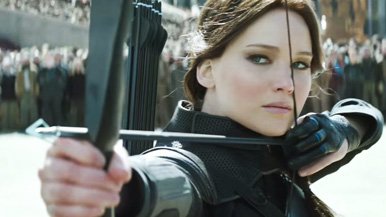|
|
Book vs. Movie - The Hunger Games: Mockingjay Part 2By Ben GruchowNovember 28, 2016
Minor Change #1: In the novel, there are a couple of off-the-cuff deaths in the Star Squad as they initially breach the city, due to errant pods. These are remarked upon, but only in the past tense, and it’s the type of action that works only on the page and wouldn’t work at all tonally with the pace of the film, where the Star Squad stays intact until the triggering of the landmine. Minor Change #2: It’s made more explicit in the film that Snow is tracking the Squad’s progress; we see him monitor them as they move into the sewers, and it’s clear that he specifically triggers the lizard muttations*. This is in keeping with the broadening of perspective that we’ve seen in the cinematic incarnation of this series so far. Minor Change #3: The lizard-muttation sequence itself - and its follow-up through a disintegrating subway station - reminds me a little bit of the Bridge of Khazad-Dum sequence in The Fellowship of the Ring, in that a passage equating to a couple hundred sedate words on the page translate to perhaps the flagship action sequence of the entire film. This one, though, with its explosive kick-start, nightmarish fire-lit imagery, gunfire, and shrieking score, may take the prize as the standout action set piece of the entire franchise. It’s a minor change in the context of plot, but it’s a massive one in the context of pure incident. Major Change #2: The final assault on the Capitol is simplified and accelerated. Instead of the city-block pod, we have a visually straightforward and arguably more realistic kamikaze charge, amid a firefight, in a straight line from a crowded street to the gates of Snow’s mansion. This takes place over four clearly delineated fronts: Katniss and Gale running toward the mansion, District 13 rebels advancing (they start the firefight in both mediums), Peacekeepers pushing back, and unarmed Capitol citizens caught in the middle.
|

|
|
|

|
Friday, November 1, 2024
© 2024 Box Office Prophets, a division of One Of Us, Inc.


